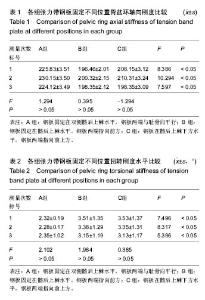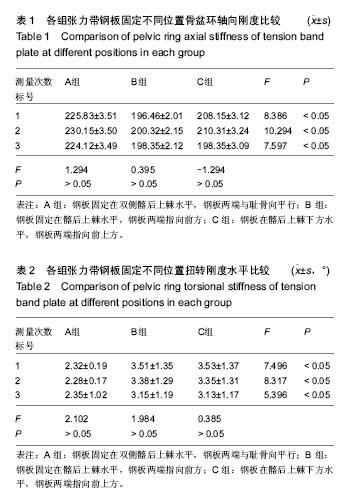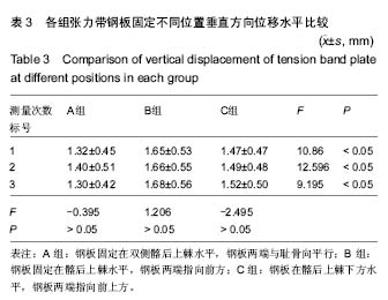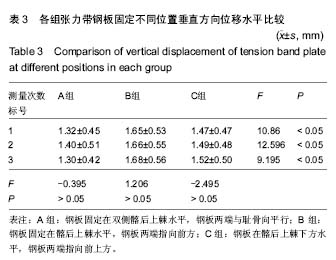| [1] Zheng ZM,Yu BS,Chen H,et al. Effect of iliac screw insertion depth on the stability and strength of lumbo-iliac fixation constructs: an anatomical and biomechanicalstudy. Spine. 2009;34(16):E565-572. [2] Vallier HA,Le TT,Bedi A. Radiographic and clinical comparisons of distal tibia shaft fractures (4 to 11 cm proximal to the plafond): plating versus intramedullary nailing. J Orthop Trauma. 2008,22: 307-311. [3] 汤志辉,王良勇,张俊,等.经关节镜空心加压螺钉内固定治疗胫骨髁间隆起骨折[J].基层医学论坛,2014,18(22): 2980-2981. [4] 李健伟,陈能,粟志辉,等.L型解剖板踝前横切口微创治疗胫骨远端骨折的疗效分析[J].中华创伤骨科杂志,2014,16(5):457-459. [5] 张峻玮,孙磊,毕宏政,等.胫骨平台骨折的手术治疗进展[J].中国矫形外科杂志,2014,22(14):1280-1283. [6] 麦胡强.切开复位胫骨远端解剖钢板内固定术治疗胫骨Pilon骨折的临床效果[J].实用医学杂志,2014,30(14): 2256-2257. [7] 林焱斌,林伟,林任,等.改良组合术式治疗复杂胫骨平台骨折的疗效分析[J].中华创伤骨科杂志,2014,16(7):632-635. [8] 王立坤,孙正考,于腾波,等.三柱理论在复杂胫骨平台骨折治疗中的应用[J].中华创伤骨科杂志,2014,16(6):495-498. [9] 包远祥,苏忠林,刘悦臣,等.胫骨远端骨折患者的手术治疗方案研究[J].中国现代医学杂志,2014,24(22):92-95. [10] 刘伟军,王俊文,黄玉成,等.专家型胫骨髓内钉治疗复杂性胫骨近端骨折[J].中华创伤骨科杂志,2014,16(3): 265-267. [11] Holcomb TM,Temple EW,Barp EA,et al. Surgical correction of checkrein deformity after malunited distal tibia fracture: a case report. J Foot Ankle Surg. 2014; 53(5):631-634. [12] Zou J,Zhang W,Zhang CQ. Comparison of minimally invasive percutaneous plate osteosynthesis with open reduction and internal fixation for treatment of extra-articular distal tibia fractures. Injury. 2013;44(8):1102-1106. [13] Aslani H,Tabrizi A,Sadighi A,et al. Treatment of open pediatric tibial fractures by external fixation versus flexible intramedullary nailing: a comparative study. Arch Trauma Res. 2013;2(3):108-112. [14] Isik M,Subasi M,Karsli B,et al. Intramedullary nailing and angulation prevention in distal metaphyseal tibial fractures. Orthopedics. 2012,35(12):1765-1768. [15] 张聪林,屈小鹏,刘志斌,等.髋臼前柱骨折诊疗方法的研究现状及进展[J].微创医学杂志,2011,6(3): 248-249. [16] Den RK,Tripathy SK,Aggarwal S,et al. A safe technique of anterior column lag screw fixation in acetabular fractures. Int Orthop. 2012;36(11): 2333-2340. [17] 赵勇,申才佳,李勇,等.胫骨远端前外侧解剖型钢板治疗不稳定性Pilon骨折[J].临床骨科杂志,2013,15(6):666-667. [18] 高翔,徐南伟,戚有成,等.胫骨远端前外侧锁定钢板内固定治疗Pilon骨折[J].中国骨与关节损伤杂志,2012,27(2): 159-160. [19] 蔡康,邓新昌,罗增文.锁定钢板治疗胫骨远端Pilon骨折的手术疗效观察[J].当代医学,2013,19(11):84-85. [20] 张立军,马正儒,张华杰,等.锁定钢板治疗56例胫骨远端Pillon骨折的临床疗效观察[J].中国医学创新,2013,10(14): 105-106. [21] 高展军,阚世廉,丁尔勤,等.解剖型钢板和锁定钢板内固定修复胫骨远端Pilon骨折[J].中国组织工程研究,2012,16(17): 3111-3115. [22] Sagi HC.Technical aspects and recommended treatment algorithms in triangular osteosynthesis and spinopelvic fixation for vertical shear transforaminal sacral fractures. J Orthop Trauma 2009;23:354-360.[23] Santos ER,Sembrano JN,Mueller B,et al. Optimizing iliac screw fixation: a biomechanical study on screw length, trajectory,and diameter. J Neurosurg Spine;2011,14(2): 219-225.[24] 周翔.后路张力带钢板与经皮骶髂关节螺钉固定治疗骨盆后环骨折脱位的比较研究[D].浙江大学,2012.[25] König MA,Jehan S,Boszczyk AA,et al. Surgical management of U-shaped sacral fractures: a systematic review of current treatment strategies. Eur Spine J.2012;21(5): 829-836.[26] 赵勇,张树栋,孙涛,等.三种骶髂螺钉固定方式治疗单侧Tile C型骶骨骨折的稳定性比较[J].中华急诊医学杂志,2013,22(5): 530-533. |



